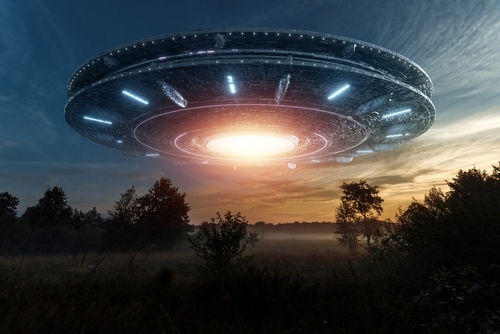
NASA released the findings of its comprehensive study on Unidentified Anomalous Phenomena (UAPs), formerly known as Unidentified Flying Objects (UFOs).
The space agency’s panel of experts, tasked with recommending future research avenues for these enigmatic occurrences, concluded there is no conclusive evidence suggesting an extraterrestrial origin for UAPs. However, the mystery surrounding numerous UAPs remains due to incomplete data archiving and curation.
The panel, comprising 16 scientific, aeronautic, and data analytic experts, was assembled to analyze UAP sightings from a logical and scientific perspective.
Their mission was to apply rigorous scientific scrutiny to these phenomena, which have sparked public interest and speculation for decades. Despite the lack of definitive proof of extraterrestrial life, the panel emphasized that the bar for such evidence must be kept high.
🇺🇸 | NOW: NASA director Bill Nelson says independent team charged with investigating UFOs: claim "There is no extraterrestrial evidence, but we don't know what they are."
NASA recognized the existence of unidentified anomalous phenomena and created a department to study them… pic.twitter.com/XgwEH28rtn
— Ape𝕏 (@Apex644864791) September 14, 2023
The team’s preliminary observations suggest that up to 98% of reported UAP sightings can be explained away.
However, a small percentage, between 2 to 5%, are considered ‘possibly really anomalous.’ These genuinely unexplained UAPs are defined as anything not readily understandable by the operator or the sensor, or something behaving unusually.
One such baffling case includes a ‘metallic orb’ recorded by an MQ-9 Reaper drone in the Middle East, first presented to Congress by Pentagon physicist Dr. Sean Kirkpatrick. Due to limited data, this object remains unidentified.
This highlights the need for more robust data collection and analysis to unravel the mysteries surrounding these phenomena.
The panel also noted that stigma has limited reporting by pilots, both civilian and military. This has resulted in a limited sample of events and data, further complicating the investigation process.
David Spergel, the head of NASA’s UAP advisory panel, emphasized the need for more work in this area.
Do aliens exist? NASA's crucial report on UFOs set to be released today
‘Alien corpses’ shown to Congress in Mexico, UFO expert testifies under oath
“They are non-human beings. We don't want to call them extraterrestrials because we don't know,"#Aliens #NASA #MexicanCongress pic.twitter.com/ZkfemCqY5R— Teja (@MAXicoInFoM) September 14, 2023
NASA’s study is separate from the Pentagon’s investigation into UAPs. The Pentagon has received 350 reports of UFOs in the past two years, and 171 of them remain unexplained. This led to increased seriousness in addressing UAPs, partly due to concerns that some could be related to foreign surveillance.
The NASA panel’s findings, while not providing conclusive evidence of extraterrestrial life, have nevertheless shed light on the complexities surrounding UAPs.
They have also underscored the need for further scientific inquiry and data collection to unravel these mysteries. As the panel wrote, “In the search for life beyond Earth, extraterrestrial life itself must be the hypothesis of last resort.”
While the report may not provide groundbreaking new information, it marks a significant step in the ongoing investigation into UAPs. It also signals a potential shift in NASA’s mission, from debunking sightings on our home planet to actively investigating these phenomena.
As we continue to explore the unknown, one thing is clear: the quest for answers about UAPs is far from over.










